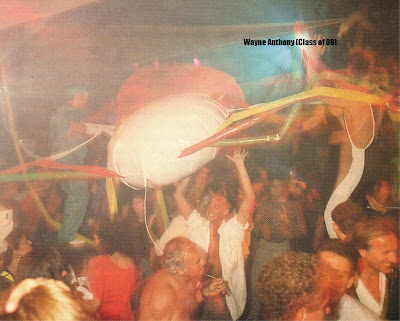'He worried for "about a day", and then accepted the nomination. "Plenty of people turn it down, but I felt if I didn't do it I'd spend the rest of my life wondering what would have happened." He rented a studio, for the first time - "I thought I needed to look a bit more serious " - and, aware that the other nominees were showing film works in "dark rooms", decided to have his part of the exhibition "light and airy and open", with lots of books and discussion. Deller's face lights up when he recalls the public reaction to his work at the show. "Whenever I went in there, the number of people was amazing and they were really paying attention. It blew me away, people's hunger to see what I'd done."
In the press coverage that followed his win, however, Deller became the Turner Winner Who Could Not Paint Or Draw. "The first question I was asked was, 'Is the video camera the new pencil?'" he says. Art teachers at his old school were wheeled out to attest to his lack of talent (in fact, he did not study art at O-level). Even so, he says, the long-term effects of winning the prize have been positive. Deller tends not to sell much of his work - after all, his art, being largely project-based, is not terribly commercial - but he has found the Turner prize tag a useful way of getting publicity for his perhaps more eccentric projects.
As for the money, "I put it all in premium bonds. And it's still there."'It had never occurred to Jeremy Deller that Memory Bucket - "a tiny film in a filler show at the Museum of Modern Art in Oxford which hardly anyone had seen" - might be in the running for the Turner prize, and his initial reaction to being shortlisted was doubt. Deller deals in collaborative social projects (a recent piece is a London Underground map containing a tribute to its longest-serving employee): would a substantial gallery space show his work to its best advantage?' The Guardian
In the press coverage that followed his win, however, Deller became the Turner Winner Who Could Not Paint Or Draw. "The first question I was asked was, 'Is the video camera the new pencil?'" he says. Art teachers at his old school were wheeled out to attest to his lack of talent (in fact, he did not study art at O-level). Even so, he says, the long-term effects of winning the prize have been positive. Deller tends not to sell much of his work - after all, his art, being largely project-based, is not terribly commercial - but he has found the Turner prize tag a useful way of getting publicity for his perhaps more eccentric projects.
As for the money, "I put it all in premium bonds. And it's still there."'It had never occurred to Jeremy Deller that Memory Bucket - "a tiny film in a filler show at the Museum of Modern Art in Oxford which hardly anyone had seen" - might be in the running for the Turner prize, and his initial reaction to being shortlisted was doubt. Deller deals in collaborative social projects (a recent piece is a London Underground map containing a tribute to its longest-serving employee): would a substantial gallery space show his work to its best advantage?' The Guardian






























































